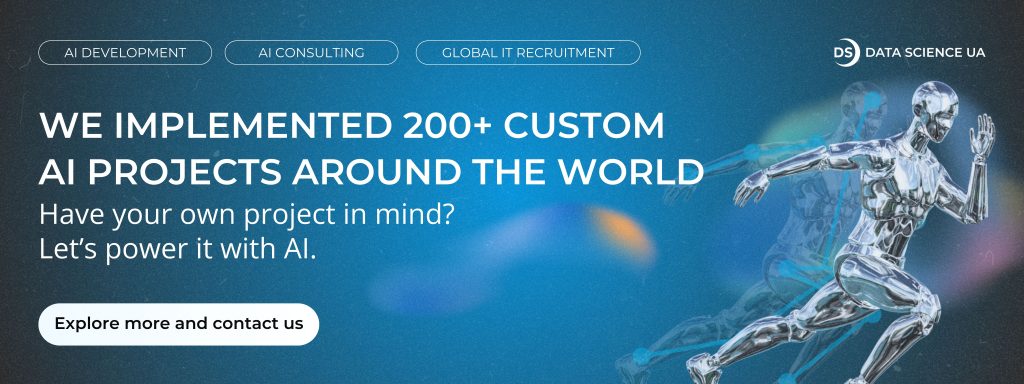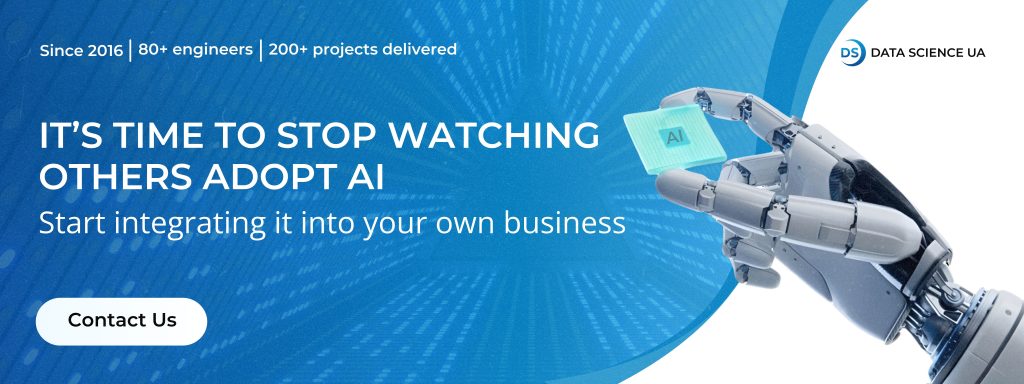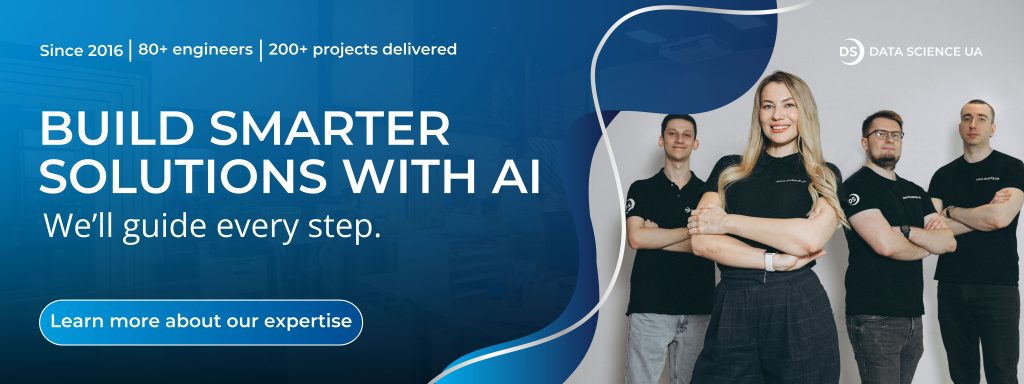AI in science
Artificial intelligence is the revolutionary technology in all fields, including the science and computer science AI field. Since it is the transition time of year 2025, we would be able to witness immense development and growth in the AI development services and the science, and it would result in unbelievable discoveries and inventions. Therefore, in this article, we will clarify how does AI help science.
AI and science have revolutionized the way scientists find and solve tough problems. AI can search vast amounts of information and identify patterns with machine learning algorithms, offering data unimaginable in the past. For instance, AI has been used in drug discovery where AI can scan vast databases of chemical compounds in an efficient manner to identify new leads for new drugs, enhancing the research and development process significantly.
There is more emphasis these days in computer science in AI on developing more interpretable, explainable, and ethical models of AI. XAI is gaining popularity as researchers and practitioners need to know why AI takes a specific decision. It is especially critical in scientific research where transparency and accountability are paramount. There is growing concern with the ethics of AI, including bias, fairness, and privacy as well. Researchers are developing AI models that are impartial, fair, and provide sensitive information’s privacy.
Another significant trend in AI science is the overlap of AI with other new technologies such as the Internet of Things and robotics. Together, these technologies can revolutionize sectors such as healthcare, agriculture, and environmental science. For instance, AI-driven IoT devices can recognize and process real-time information from environment or human body sensors, enabling scientists to make highly informed predictions and decisions. Additionally, algorithms driven by AI can easily carry out complex actions in dangerous environments to enable scientists to perform risky or mundane research tasks.
There has also been a growing trend of democratizing artificial science in recent years to make it available to more researchers and scientists. Most organizations and institutions are developing user-friendly AI tools and platforms that allow researchers to leverage the power of AI in science and technology without necessarily having to be highly technically blessed. These software facilitate researchers to generate plagiarism-free, original, and high-quality essays and articles in minutes, improving their research efficiency and productivity. Learn more about it here: machine learning development firm.

How AI is Reshaping Scientific Methodologies
One of the most significant areas where AI is making a profound impact is in computer science AI, which is the use of AI in science to develop smart systems that are able to carry out tasks previously reliant on human intelligence. Science and AI are also being utilized to study vast sets of information, simulate experimental runs, and develop hypotheses and thus accelerate the research process for fields of genomics, drug discovery, and materials science.
Another emerging trend in AI science is the use of AI-powered virtual assistants to scan data. Virtual assistants employ natural language processing and machine learning algorithms to read through vast amounts of scientific literature, identify relevant research papers, and summarize findings. This enables researchers to stay abreast of recent scientific developments and make informed choices in their research.
Moreover, AI for science is also utilized to enhance the accuracy and effectiveness of scientific simulations. For example, in computational biology, it is possible to simulate complex biological processes, such as protein folding or drug interaction, with extremely high accuracy using AI algorithms. Pharmaceutical AI solutions enable researchers to design information about complex biological systems that would be hard to experimentally research.
Besides these trends, artificial science is also applied in data-driven decision making. For instance, AI algorithms can scan through large amounts of data in a bid to discover patterns, trends, and correlations that are impossible for human researchers to discover. It helps scientists formulate hypotheses, conduct experiments, and make data-driven knowledge-based decisions.
Solving problems of AI in science
Data quality and quantity: One of the greatest problems of AI, if applied in science, is the quality and availability of data. High-quality data in large quantities is required to train and generate precise results for AI algorithms. In addition, a shortage of common data formats and data sharing guidelines can further hinder the progress of Artificial Intelligence. For more, refer to data annotation services.
Solution: To resolve this issue, the researchers have to direct their efforts towards increasing data quality and quantity. It can be done in the form of developing standard formats for data, providing data freely in public repositories, or employing data augmentation techniques to generate synthetic data. Scientist-data scientist collaborations can also help in devising effective data acquisition and curation techniques to obtain high-quality data for AI-focused research.
Interpretability and explainability: Deep learning neural networks, like AI models, are “black boxes” and are hard to interpret and understand the decision-making mechanism. Interpretability and explainability are extremely crucial in scientific research since researchers must be aware of how AI models arrive at their conclusions and recommendations. Interpretability problems can challenge the reliability, accountability, and ethical consequences of deep science AI.
Solution: Researchers need to develop AI models that are explainable and interpretable. This can be achieved using methods such as rule-based models, decision trees, or integrating interpretability methods into deep learning models, such as the application of attention mechanisms or explainable AI.
Computational power and scalability: AI models, particularly deep learning models, require tremendous computational resources, such as processing power and memory, for training and inference. However, much of the scientific research environments may not have access to such resources, and thus it becomes challenging to deploy and scale AI models in real life. The lack of scalability of AI models could limit their use and effect in real-world scientific applications.
Solution: Methods need to be invented by scientists to reduce the computational resources consumed by AI models in science. This can be achieved by building light models that use less computational resources, employing distributed computing techniques, or employing cloud computing facilities for scalability.
Benefits of AI in science
The potential of artificial intelligence in science and technology is vast and optimistic and offers unprecedented opportunity to continue to expand our understanding of the natural world.
Accelerating scientific advances: Traditional scientific work can be a back-breaking process involving laborious experimentation, data collection, and analysis. Computer programs based on AI such as machine learning software can analyze gigantic amounts of data in the blink of an eye and identify patterns, trends, and relationships that human scientists are not aware of.
Enabling precision medicine: Researchers can compare huge sets of patient data, including genetic data, history of treatment, and response to treatment, and design personalized treatment regimens for patients through the use of AI algorithms. AI is also capable of identifying lead drugs, predicting outcomes of diseases, and automating treatment procedures, leading to better and targeted therapies for patients.
Enhancing data analysis: Data analysis is a part and parcel of scientific research, and AI is revolutionizing the process. AI algorithms can analyze huge and sophisticated data sets with high speed and accuracy and extract vital insights and patterns that might not be easily discernible to human researchers.
Facilitating interdisciplinary research: AI is being used as an investigation tool by an ever-growing number of researchers across multiple disciplines, and it is facilitating cross-disciplinary communication. Computer scientists and biologists, for instance, can work together and develop algorithms in AI to screen biological data and generate new observations and findings in the fields of genomics, proteomics, and drug research. The nature of scientific discovery has already been transformed by artificial intelligence.

Processing of scientific texts and articles
With the help of natural language processing services, AI can read thousands of scientific articles daily, summarize them, find interlinks, and even recommend new research pathways. It is especially useful for researchers working with interdisciplinary data – for example, bioinformatics or materials science.
Image and video recognition in research
Computer vision development company assists in image processing from microscopes, satellites, X-rays, and more. It speeds up diagnostics and increases accuracy in medicine, geosciences, agriculture. Computer vision allows you to “see” the abnormalities that can be missed by the human eye and make accurate predictions from the images.
From modeling to forecasting
The role of AI in science and technology is huge. It helps simulate complex processes: climate, behavior of new materials, molecular interactions. They predict the result even before the experiment itself starts. This not only saves time, but also budget. Oil and gas companies, for example, are already using AI to predict deposits, and the agricultural industry to predict yields depending on weather conditions.
AI in action: Real-world scientific examples
AI has already proven its effectiveness not in words, but in deeds. Here are some AI in science examples where it accelerated scientific processes and reduced costs:
Drug development at Pfizer and Moderna
During the COVID-19 pandemic, AI and science has become a key tool for accelerating vaccine development. Models analyzed data on the virus, helped to select formulas, and predicted side effects. This made it possible to reduce the path from the laboratory to mass production from several years to several months.
Space research at NASA
The use of artificial intelligence in science helps NASA process gigantic amounts of data from telescopes and satellites. It analyzes images, finds anomalies, and predicts the movement of celestial bodies. Without it, modern research into the universe would be almost impossible.
Agriculture and agronomy
AI science and technology is used to monitor fields from drones. It assesses plant health, predicts crops, helps farmers apply point fertilizers and control pests. This reduces costs and increases profitability.
Analysis of scientific publications in research institutes
Using natural language processing technologies, AI analyzes thousands of articles, reports and archival data. He finds connections that a person would miss, and helps to quickly build new theories. This approach is already used in biomedicine, energy, and climatology.
For companies that want to innovate and be one step ahead, these examples are a direct demonstration of AI’s potential. But AI used in science is important to understand that the technology works only with the correct formulation of the task and competent implementation. This is where the work of an experienced team begins.
Ethical Considerations in AI-Driven Scientific Research
AI is a powerful tool. But with its introduction, new challenges come, especially in the scientific environment.
Transparency of algorithms
When AI offers a result, it is important to understand how it came to it. Especially when it comes to medical diagnostics or the development of new materials. High-quality solutions should be explainable, and not remain a “black box”.
Reliability and verification
AI can be wrong if the raw data is poor or biased. Therefore, it is critical to conduct data quality checks to avoid false conclusions and minimize risks.
Responsibility and ethics
In some areas, such as biology or genetics, AI decisions can affect the fate of people. Technologies should be implemented taking into account ethical standards, and maintain a balance between automation and control.
Scientific data confidentiality
Many studies contain sensitive or intellectually relevant information. Ensuring the security of this data is a prerequisite for scientific and business teams.

Role of AI Scientist in Modern Research
Forensic science is a discipline of crucial significance that has a significant role to play in crime-solving and the dispensation of justice. With the advent of AI, forensic science has witnessed a change in the investigation approach and the examination of evidence. Science coupled with AI can analyze vast amounts of data, look for patterns, and make conclusions with hitherto unimagined precision and accuracy. This has dramatically enhanced the effectiveness and efficiency of forensic investigations.
In addition, AI is also being used in facial recognition technology, which has emerged as a powerful tool to be used in forensic investigation. Facial recognition algorithms can select suspects from CCTV footage or any images, which help in identifying and tracking criminals. In addition, Artificial Intelligence scientist applies AI in voice and speech recognition, which can be used in forensic audio examination to identify the speakers and analyze audio evidence.
The intersection of artificial intelligence and science has introduced new opportunities and possibilities to enhance various sciences. Scientific AI, as applied in the practice, is now widely known and has transformed data analysis, insight generation, and discovery by scientists.
One of the largest inputs that science and artificial intelligence make is that it can receive and analyze voluminous amounts of information. In the wake of the avalanche of data in scientific research, AI has been an invaluable tool in big data management, pattern detection, and arriving at meaningful conclusions. Artificial intelligence algorithms are able to handle massive complex data sets such as genomics data, climate data, and astronomy data at unprecedented speeds and scales, enabling scientists to make paradigm-shifting discoveries impossible without them.
Final thoughts
With the help of AI consulting, integration of machine learning algorithms, virtual assistants, and simulation techniques, new opportunities are emerging in fields such as genomics, drug discovery, and materials science. With AI advancing even more, it has immense capability to revolutionize the future of AI in scientific research and infuse innovation in numerous industries. Keep reading to witness the exciting breakthroughs of AI science that keep re-inventing the face of scientific inquiry and business. Well, now you know more about what is AI in science.
FAQ
What ethical concerns does AI raise in science?
The task of AI research scientists is to apply artificial intelligence solutions and machine learning technology to business problems in the real world. They are pioneers in AI research, pushing its boundaries and studying its implications for society. AI research scientists can also contribute to drug development, decision-making in various fields, and help with autonomous driving and blind people’s accessibility.
What are the main goals of AI?
Constructing problem-solving ability based on sound algorithms that can draw logical conclusions and replicate human reasoning in solving complex puzzles.
Constructing logic and problem-solving skills in an effort to enable AI to reason and break through obstacles in a logical order, similar to humans following procedure in a defined sequence in an effort to break through challenges.
Acquiring knowledge and reasoning capabilities in making decisions and solving problems.
Developing automated planning and scheduling features to consolidate processes and activities.
What type of AI is Siri?
Siri is a voice virtual assistant or chat AI, a type of AI, and is specific to Apple devices like iPhones, iPads, Mac, and HomePod.
How can scientists adapt to working with AI tools?
Scientists can get used to working with AI tools through a clearly defined research problem, collaboration with data experts, and gradually learning the basics of AI. They can experiment with low-code, accessible platforms, monitor data quality, and enable ethical use. Interdisciplinary collaboration is the foundation of getting AI to work successfully in science.